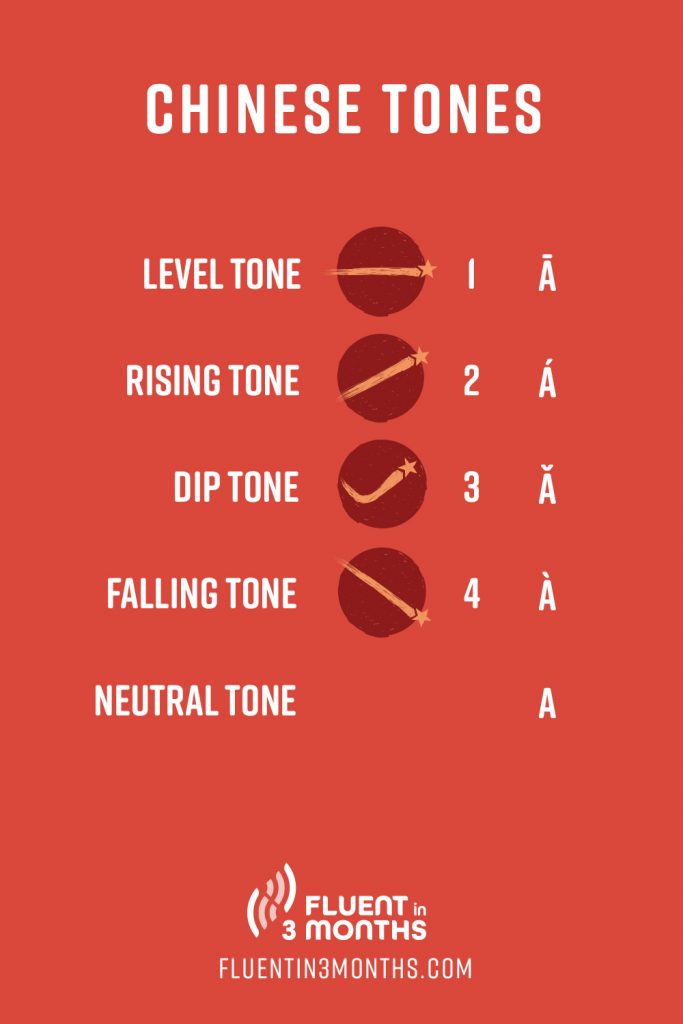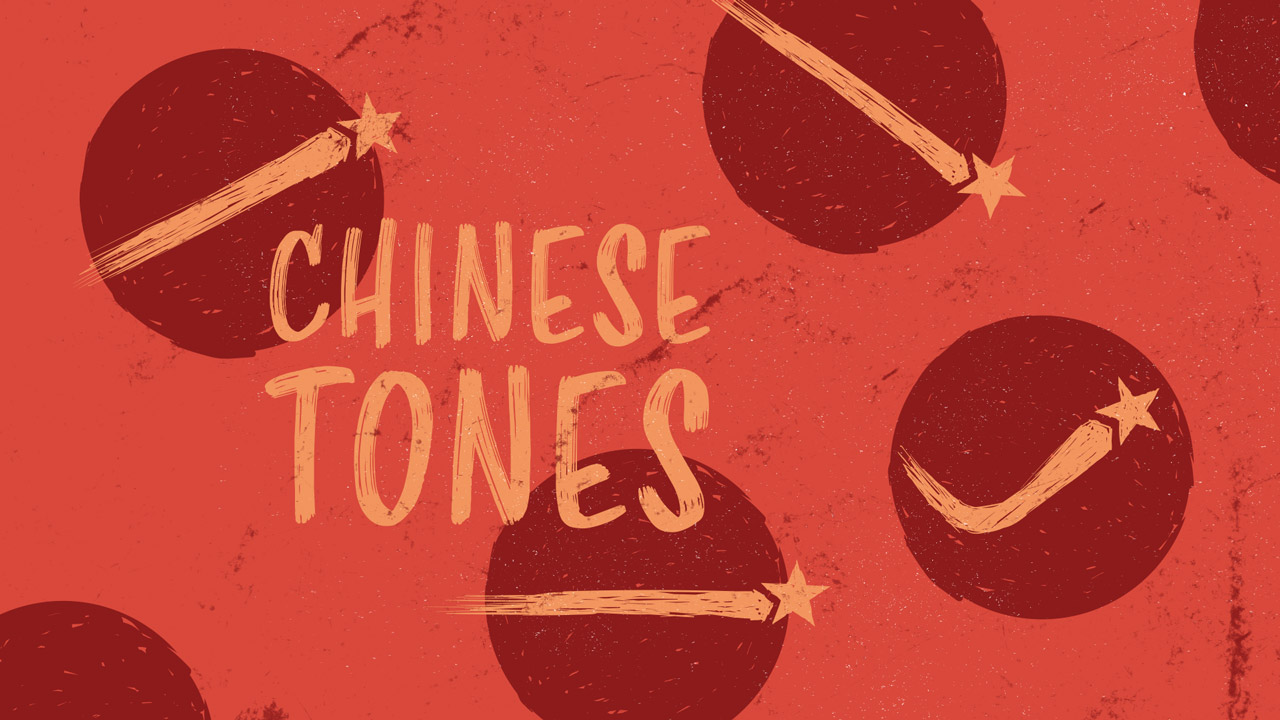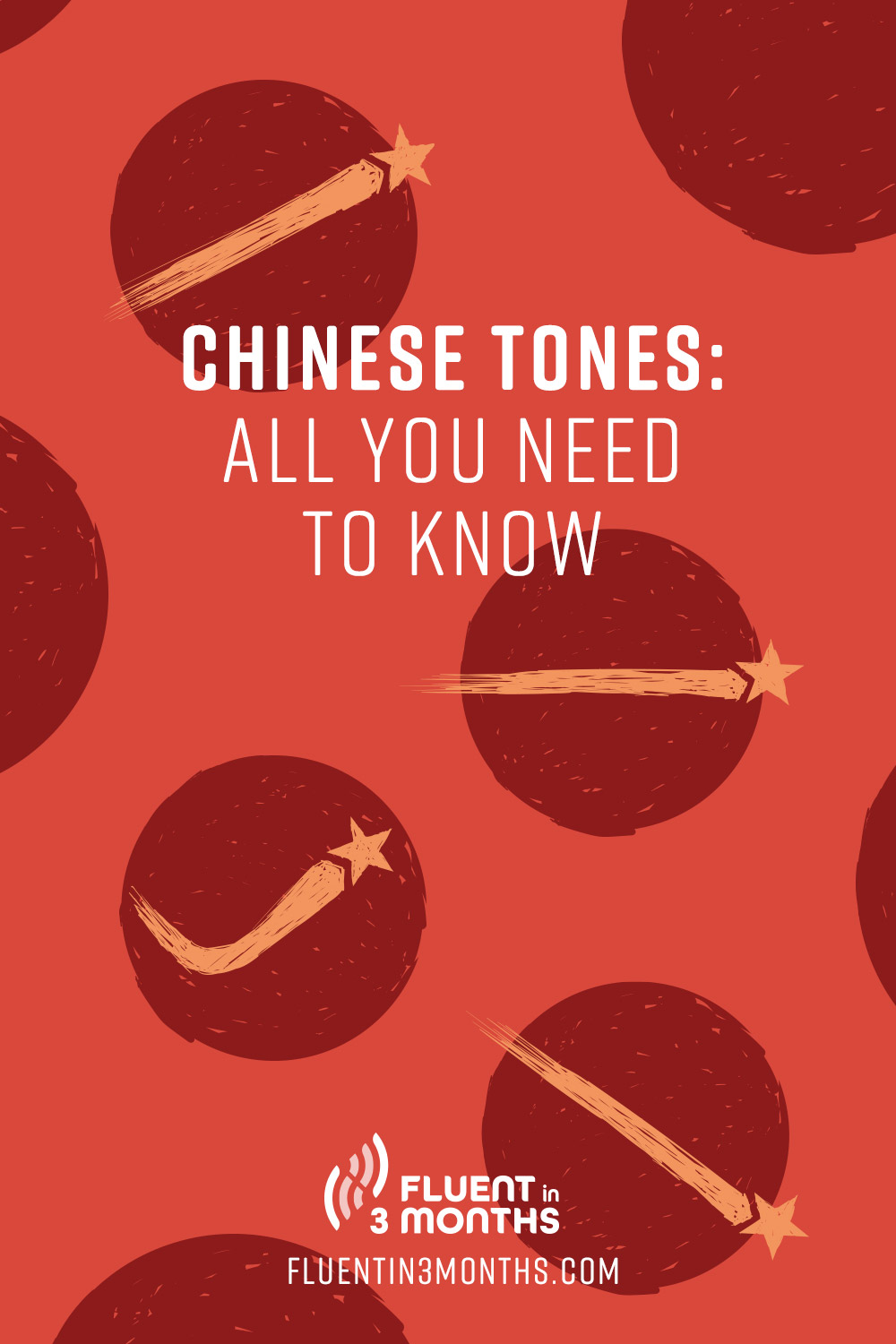Chinese Tones: All You Need to Know (Complete Guide)
Learning Chinese tones can seem like a big challenge. Chinese is already considered one of the hardest languages for English speakers to learn, and English doesn’t really have tones in the same way Chinese does.
So how can we learn Chinese tones in a way that helps us start speaking Chinese fast?
Well, it may come as a surprise but – tones in Chinese are easier than you think!
If you’re wondering, “How many tones in Chinese?” Be glad to know there are only 4 tones and one neutral tone you need to learn!
Compared to other languages with more (even Cantonese has 6 tones), it’s not too rough, right?
But when you’re new to the language, it can seem like every word blends together and you can’t pick out the tones.
That’s where we come in.
We’ll break down the 5 tones of Chinese (including neutral) so you can learn to recognize them. Then, we’ll share ways you can improve your Chinese tone pronunciation.
Table of contents
- What Are the 5 Tones of Chinese?
- Tone #1: Flat Tone, ā or a1
- Tone #2: Rising Tone, á or a2
- Tone #3: Dip Tone, ǎ or a3
- Tone #4: Falling Tone, à or a4
- Tone #5: Neutral Tone, a
- What Do Tones Mean in Chinese?
- How Tones Impact Pronunciation of Syllables
- How to Memorize Tones in Chinese
- Speak Now, Imperfectly
- Chinese Tones Practice: Mimic What You Hear
- Practice Lots of Tone Combos
- Listen – A Lot!!
- Find a Tutor To Help You Master Chinese Tones
- Toned Out to Toned In
What Are the 5 Tones of Chinese?
What are the different tones in Chinese?
Well, in Chinese, 4 tones change their pitch and one tone remains neutral. There are two ways to romanize the Chinese tones: with numbers and with Chinese tone marks. Take a look below:

One thing to know is: anyone can make tonal inflections! In fact, you do it in English all the time when you talk, it just doesn’t change the meaning of the word.
You don’t have to be able to carry a tune or hold a pitch. Pitch and tone are two different things. Pitch is hitting a certain note, and tone is how you hold a sound with your voice.
So don’t worry! You can do it.
Tone #1: Flat Tone, ā or a1
This tone is more high-pitched than the rest. You start high and keep the tone even. It’s also a bit drawn-out or long.
In romanized writing, this would be marked either with a tone mark such as ā or as a1 to mark the number.
Tone #2: Rising Tone, á or a2
Tone number 2, á or a2, is a rising sound. You start at a middle pitch and rise higher.
Tone #3: Dip Tone, ǎ or a3
The dip tone is one of the harder ones to get right starting out. This tone starts low, dips lower, and rises.
As a stand-alone sound, it’s pretty easy to hit the inflection. But when it’s in a word or sentence blending together? It can feel hard to get that inflection right!
In those instances, you can shorten this sound to a low, level tone when you’re speaking the tone within a word at a normal pace. But more on that below.
Tone #4: Falling Tone, à or a4
This tone starts high and lowers, or falls, hence its name.
Tone #5: Neutral Tone, a
This tone isn’t marked with any inflection, so it isn’t really considered a true tone. When saying this one, keep it neutral by matching the tone of the syllable before it and keep it short.
What Do Tones Mean in Chinese?
If you’re totally new to the language, you may wonder how tones in Chinese play a role and how important they are.
Well… They’re very important.
I’m going to show you the example that everyone uses because there’s a word – ma – that depending on the tone, means completely different things.
Tone 1: 妈 (mā), “mom”<br>
Tone 2: 麻 (má), “hemp seed”<br>
Tone 3: 马 (mǎ), “horse”<br>
Tone 4: 骂 (mà), “to scold”<br>
Tone 5: 吗 (ma), question particle
As you can see, the word means completely different things based on the tone!
The Chinese tone marks show how you should pronounce the word to say it correctly. Because obviously you don’t want to call your mom a horse by accident!
It takes quite a bit of practice to master, both listening and speaking. But with time you’ll become more and more comfortable with tones.
How Tones Impact Pronunciation of Syllables
Chinese pinyin (the romanization of hanzi characters) is made up of syllables, and these syllables have three parts:
- Initials
- Finals
- Tones
For example, 你 is written in pinyin as nǐ. The “n” is the initial, the “i” is the final, and the tone marker making it the 3rd sound “ ǐ ”.
One way tones impact pronunciation is how they pair up! So here’s a rule to know: If you have two 3rd tones (dip tones) back-to-back, the first one will change to a 2nd tone (rising tone) and the second will stay as a dip tone.
The most common example is 你好, “hello.” The first character, 你, is read nǐ and the second character, 好, is hǎo.
But put together, they become ní hǎo.
And when the 3rd tone is paired with anything else, it’s often shortened to a low, level tone rather than the whole dip. Only when it’s said in isolation is it normally said with the full dip tone.
Another example: 不, bù, is in the 4th tone and means “do not/does not/no/not.” When it comes before another falling tone, it changes to the 2nd tone: bú.
There’s also the common word 一, yī, which means “one” or “first.” It’s said with the 1st, flat tone when isolated.
But when it’s followed by a 4th tone? It becomes a 2nd tone. Any other tone it’s paired with? Say it with the 4th tone.
There are more – but these are some of the basic ones to know.
One more note: some of these changes are not marked in the pinyin. It’s something you just have to memorize.
How to Memorize Tones in Chinese
Still thinking about how to master Chinese tones when it’s so different from what you know? Don’t stress. Pinyin tone marks are here to help.
We’ve already talked about how you identify tones in Chinese – by looking at the tone mark above the vowel when written in pinyin.
And the handy thing is, these tone marks directly reflect the way you’re supposed to use your voice for tone.
Tone 1 is flat, and has a flat line on top. Tone 2 starts at the bottom and rises. Tone 3 starts up, goes down, and comes back up again. Tone 4 starts at the top and goes down. Tone 5 (neutral tone) has no tone at all and picks up from what’s around it.
The tone marks themselves tell you what to do! So memorizing tones in Chinese is easy.
The hard part is getting it right. So here are some strategies to improve your Chinese speech and tones.
Speak Now, Imperfectly
I have a saying that I like to use: “imperfect consistency.” I apply it to my fitness, but it works here, too.
It’s better to use what you learn and try your best. Don’t be scared of making mistakes – you’ll never learn if you don’t speak!
The good thing is, as a beginner, most of what you’ll be able to say is predictable. Mandarin speakers will be able to grasp it through context, even if your tone is off.
So don’t fret. Try your best.
Chinese Tones Practice: Mimic What You Hear
Whenever you learn a new word, aim to hear it spoken by a native speaker and mimic what you hear.
One great way to get started mimicking is to use online dictionaries with audio.
You want one that will let you listen to a real speaker (not an automated one) if possible. Whenever you learn a new word, search, listen, and repeat.
Here are some suggestions:
Practice Lots of Tone Combos
As I mentioned above, some tones change based on how they’re paired.
But besides that, making your speech sound smooth takes effort. So one of the best things to do is practice saying lots of different tone pairs.
This way you get used to how the tones flow like riding a wave and aren’t just overemphasizing isolated tones.
Try going through the 100+ core Chinese words with this in mind.
Listen – A Lot!!
Listening in Chinese, even passively, can help you get more used to hearing and identifying tones. So listen all the time!
A great way to do this is with TV shows and Chinese movies. You could also use music, podcasts, or any other listening resource.
The point isn’t to understand everything. It’s to get used to the cadence of the language.
Find a Tutor To Help You Master Chinese Tones
The easiest and most cost effective way to practice speaking Chinese is with an AI tutor, and for that we recommend Teacher AI. You’ll get to speak Chinese with an AI version of Benny Lewis, founder of Fluent in 3 Months.
You can also find a reasonable tutor on sites like Preply (our review is here) who will help you improve your speaking skills.
Here’s a guide on how to find the best online tutors for you. Make sure to find one who gives you good feedback on your pronunciation.
While most good tutors will, you’re also more likely to get a lot of praise when speaking and some people may be hesitant to point out your flaws. So make sure it’s a good fit and you’re getting the feedback you need.
If you can’t get a tutor right now, try looking for Chinese language exchange partners online or in your community.
You could also try recording yourself and comparing your speech to native speakers.
Toned Out to Toned In
I hope this beginner’s guide to Chinese tones helps you understand what they are and feel more confident in using them.
Don’t be scared to start speaking Chinese! The more you practice, the better you’ll be.
Now that we’ve discussed tones, why not move on to your next Chinese lesson?




Social